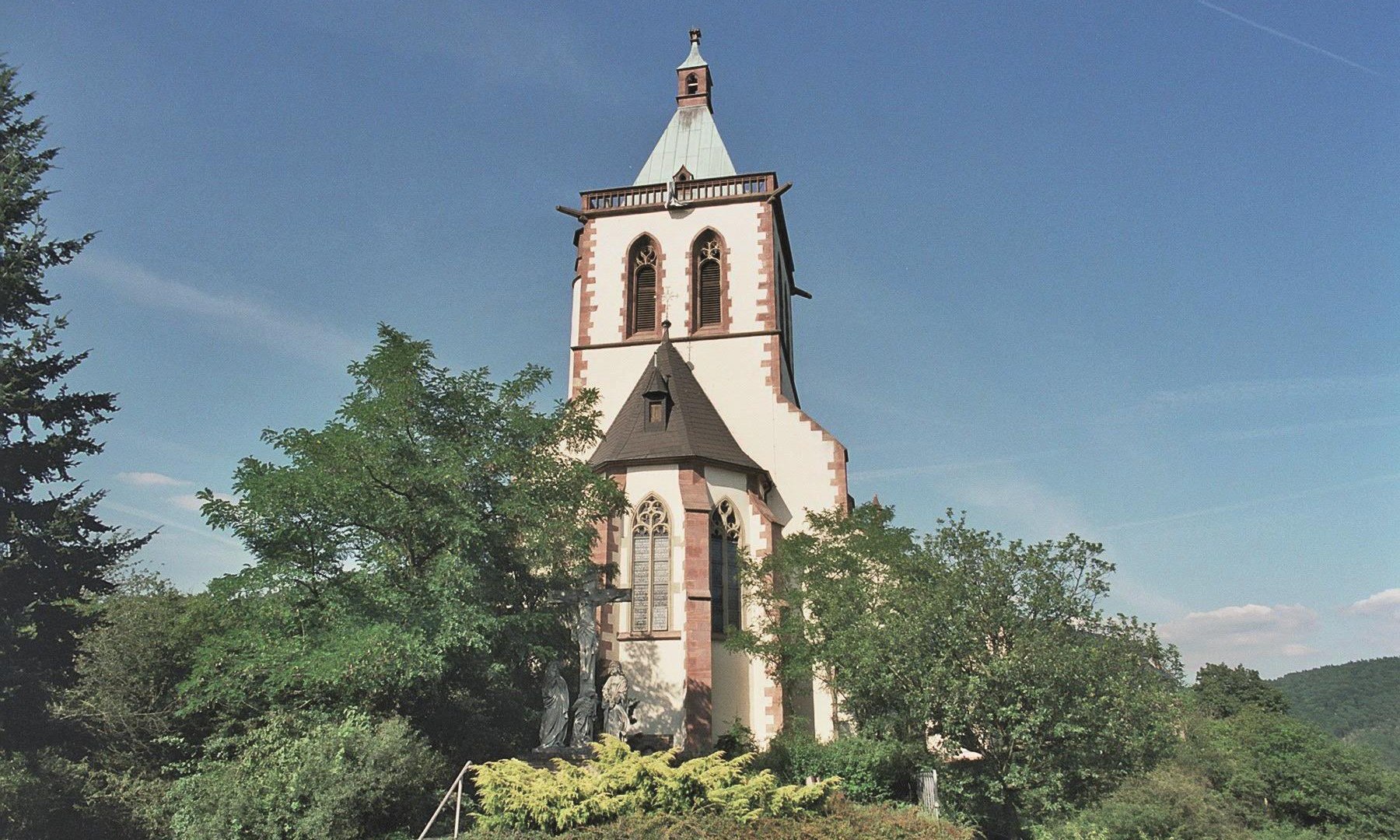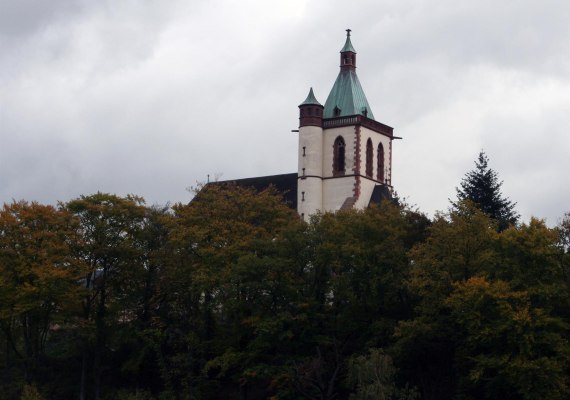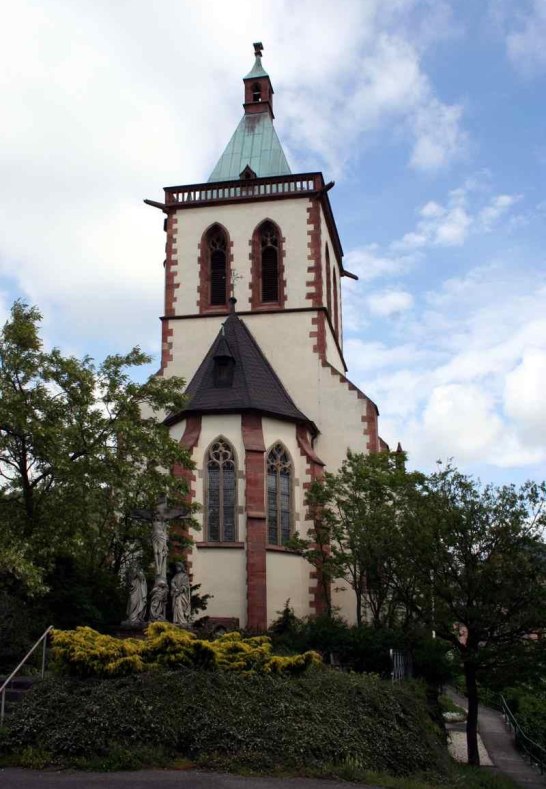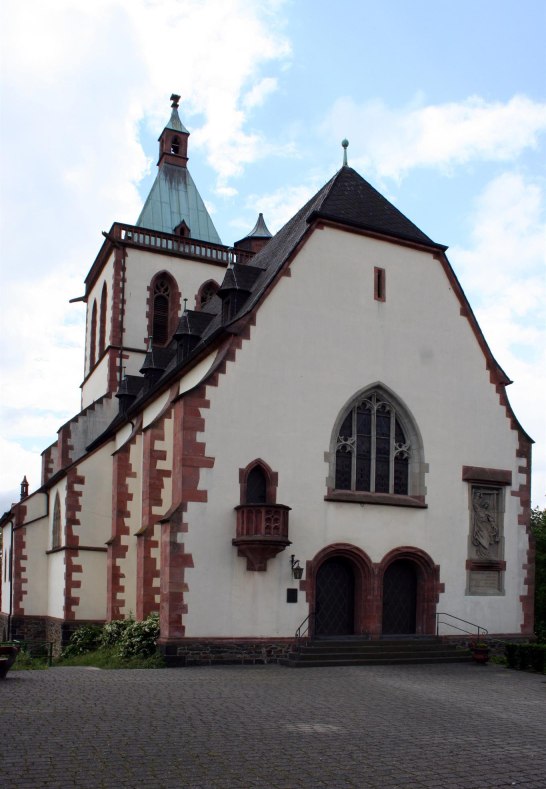Chapel Allerheiligenberg
Am Allerheiligenberg 63, 56112 Lahnstein
Beautiful Hill Chapel in the district of Niederlahnstein on the hill.
A Prominent Position
The rocky outcrop that towers 170 metres above the mouth of the River Lahn has always been a prominent spot offering spectacular views of the Lahn and Rhine Valleys. There was probably already a cult site at this exceptional location in prehistoric times.
In the year 1671 the primissary Johann Philipp Trabach builds a chapel here “in honour of the Most Holy Trinity, the Mother of God and all the Saints”. From now on the hill is known as Allerheiligenberg or the ‘Mount of All Saints’. It quickly becomes a popular place of pilgrimage. On the west side of the chapel a hermitage is added to cater for the needs of the numerous pilgrims.
Between the years 1854 and 1886 a 1200 metre long pilgrim’s way is constructed. Starting at the old cemetery in Niederlahnstein it leads up to the Allerheiligenberg and has several small rosary chapels along its route.
Following the Franco-Prussian War of 1870/71, a new church is planned as a memorial to those who fell in the war. Between 1895 and 1901 the impressive single-nave church is built in the Rhenish Late Gothic style to the plans of the Freiburg architect Max Meckel. Inside the church there are numerous religious images, a rosary altar and a warriors’ memorial altar by the Lahnstein sculptor Caspar Weis.
Of particular note is the miraculous image of the Madonna in the Rosary from the Baroque era which originates from the old pilgrimage chapel and is the last station of the pilgrim’s way. On the west wall of the church is a crucifixion group by Caspar Weis. Underneath is a rock grotto containing a representation of the entombment of Christ by the same artist.
In 1919 the Missionary Oblates of Mary Immaculate found a monastery on the Allerheiligenberg. From now on this religious order uses the old chapel as its monastery chapel until the year 2012 when the monastery is closed. Following extensive restoration work at the end of the 20th century, the church now lends the Allerheiligenberg a new radiance. The church is maintained by the Roman Catholic parish of Lahnstein. Many couples choose to marry here.





